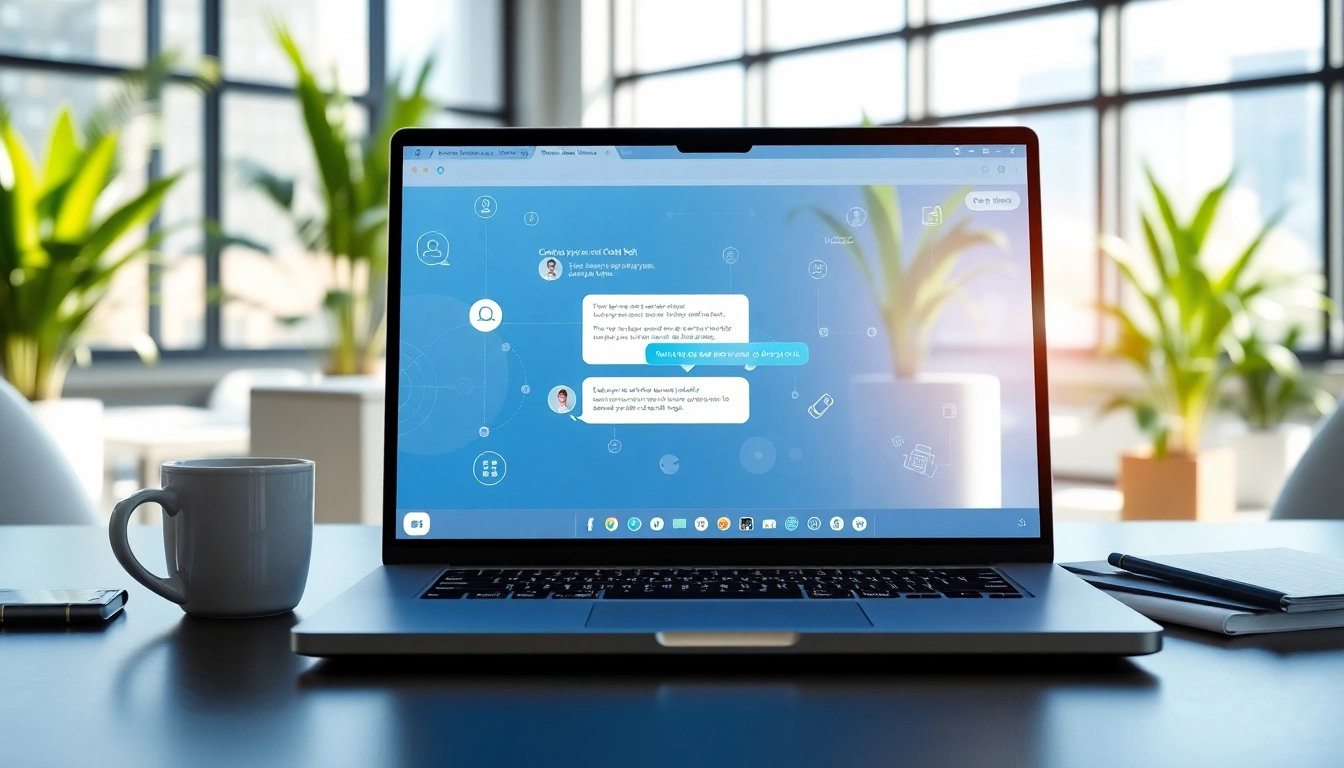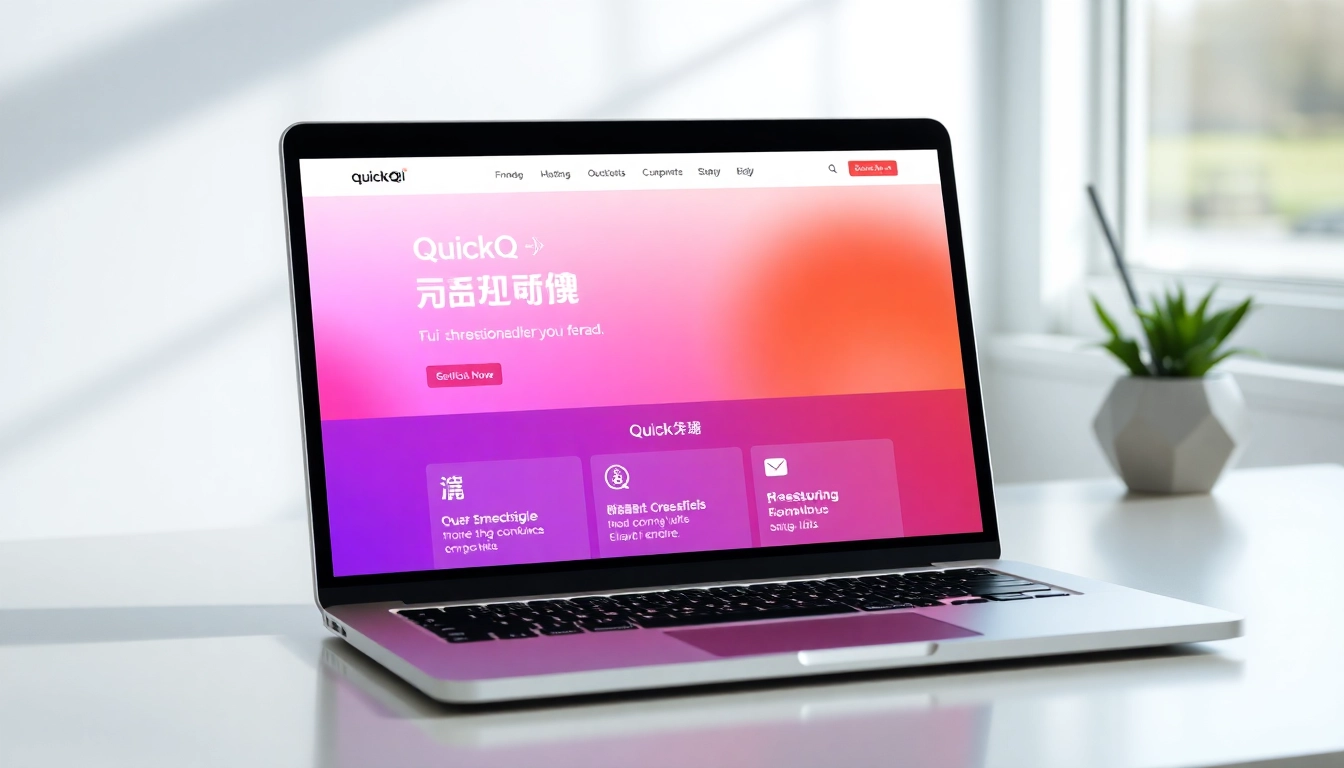Enhancing User Engagement with a ChatGPT Bot for Your Website
Understanding ChatGPT Bots and Their Importance
What is a ChatGPT Bot?
A ChatGPT bot is an AI-powered conversational agent designed to simulate human-like conversations through text-based interactions. Using advanced natural language processing (NLP) and machine learning techniques, these bots can understand user input, generate meaningful responses, and engage users effectively in real-time. ChatGPT bots leverage OpenAI’s state-of-the-art models to provide dynamic interactions that can adapt to various contexts, making them suitable for diverse applications ranging from customer support to lead generation.
Benefits of Using a ChatGPT Bot for Websites
Integrating a ChatGPT bot on your website can significantly enhance user interaction and engagement. Here are several key benefits:
- 24/7 Availability: A ChatGPT bot can communicate with visitors at any time, ensuring consistent support and assistance even outside of business hours.
- Improved Response Time: These bots minimize wait times by providing instant answers to frequently asked questions, enhancing overall user satisfaction.
- Cost Efficiency: Utilizing a ChatGPT bot reduces the need for extensive human support staff, saving companies valuable financial resources.
- Scalability: A ChatGPT bot can handle multiple interactions simultaneously, accommodating spikes in traffic without compromising service quality.
- Data Collection: Interactions with users can be leveraged to gather insights and feedback, allowing for continuous improvement in products and services.
Common Misconceptions about ChatGPT Bots
Despite their increasing popularity, there are several misconceptions regarding ChatGPT bots:
- They Replace Human Agents: Many believe that implementing a ChatGPT bot will completely eliminate the need for human customer service agents. In reality, these bots serve to complement human efforts, tackling routine queries while freeing humans to focus on more complex issues.
- They Are Easy to Set Up: While many platforms provide user-friendly interfaces for implementation, effectively configuring a ChatGPT bot to meet your specific needs and audience may require careful planning and expertise.
- They Provide Infallible Responses: ChatGPT bots utilize advanced algorithms to understand and respond, but they can still generate inaccuracies or misunderstand user queries. Continuous training and updates are necessary for maintaining optimal performance.
Implementing a ChatGPT Bot on Your Website
Choosing the Right Platform for Integration
When considering the implementation of a ChatGPT bot, the selection of the right platform is paramount. Several factors should guide this decision:
- Integration Capabilities: Ensure that the platform can be easily integrated with your existing website infrastructure, content management systems, and marketing tools.
- User-Friendly Interface: Look for providers that offer intuitive dashboards and easy-to-use customization features, enabling non-technical staff to manage the bot effectively.
- Customization Options: The ability to customize responses, tone, and various machine learning parameters is crucial for ensuring the bot aligns with your branding and user needs.
Platforms like chatgpt bot for website offer an array of integration options tailored to these requirements, ensuring flexibility and functionality.
Step-by-Step Setup Guide for ChatGPT Bots
Implementing a ChatGPT bot on your website involves several structured steps:
- Define Objectives: Clearly outline the purpose of the ChatGPT bot. Determine whether it will be primarily for customer support, lead generation, FAQs, or other purposes.
- Choose a Platform: Select a platform that aligns with the defined objectives and supports the functionalities you require.
- Configure the Bot: Customize the bot’s interface, personality, and responses. Many platforms provide templates or AI models to facilitate this process.
- Train the Bot: Feed the bot with relevant data and train it on common user queries and responses to enhance its understanding and accuracy.
- Integrate into the Website: Embed the bot into your website using provided APIs or widgets, ensuring seamless integration with existing systems.
- Test the Bot: Conduct rigorous testing to ensure the bot functions correctly and delivers a smooth user experience. Address any glitches or shortcomings identified during testing.
- Launch and Monitor: Go live and continuously monitor interactions to gather insights and make iterative improvements as needed.
Customizing ChatGPT for Your Brand
Customization is vital for creating a ChatGPT bot that truly reflects your brand identity:
- Brand Voice and Tone: Tailor the bot’s language style to match your brand’s voice, whether it’s formal, friendly, humorous, or authoritative.
- Visual Elements: Customize the color scheme, buttons, and layout to align with your website’s design. Aesthetic coherence fosters a better user experience.
- Specific Responses: Program the bot with unique responses tailored to your products or services, enhancing relevance and contextuality in interactions.
Improving User Experience with ChatGPT
Design Best Practices for ChatGPT Interfaces
An effective user interface (UI) design for a ChatGPT bot can significantly influence user engagement. Here are some best practices to consider:
- Simplicity: Keep the interface uncluttered with a straightforward design that guides users effortlessly through conversations.
- Accessibility: Ensure that the bot is accessible to all users, including those with disabilities, by following web accessibility standards (WCAG).
- Engaging Visuals: Employ visually appealing components like icons, images, or animations to create an engaging interaction experience.
Personalization Strategies with ChatGPT
Personalized interactions enhance user satisfaction and engagement. Here are ways to achieve this with your ChatGPT bot:
- User Context: The bot should consider user context, such as previous interactions and preferences, to tailor responses. Implementing user profiles can facilitate this process.
- Dynamic Responses: Utilize algorithms to create responses that adapt based on user behavior, ensuring interactions feel relevant and customized.
- Follow-Up Questions: Encourage the bot to ask follow-up questions based on initial responses, promoting prolonged engagement and deeper conversations.
Collecting and Utilizing User Feedback Effectively
User feedback serves as a vital component in refining the performance and functionality of your ChatGPT bot:
- Feedback Mechanisms: Incorporate mechanisms for users to provide feedback easily after their interaction with the bot. This can include thumbs up/down ratings or short surveys.
- A/B Testing: Implement A/B testing to assess different functionalities or responses to determine which engagements are most effective.
- Iterative Improvements: Regularly analyze collected feedback to identify patterns or recurring issues, implementing updates and optimizations accordingly.
Maximizing Engagement and Conversions
Enhancing Customer Support with ChatGPT
A ChatGPT bot can significantly improve the efficiency of customer support by:
- Instant Responses: Providing immediate answers to common queries, thereby reducing response times and enhancing user satisfaction.
- Troubleshooting Assistance: Helping users navigate problems or issues with products by giving step-by-step solutions or directing them to useful resources.
- Escalation to Humans: Seamlessly transferring complex queries to human support agents when needed, ensuring all user needs are met promptly.
Using ChatGPT for Lead Generation
ChatGPT bots can be effective in lead generation strategies by:
- Qualifying Leads: Engaging with visitors and asking qualifying questions to collect essential information, helping businesses identify potential leads.
- Prompting Action: Encouraging visitors to provide their contact details or subscribe to newsletters through well-placed prompts, enhancing your lead database.
- Offering Promotions: Informing users about current promotions or deals tailored to their interests, incentivizing engagement and conversion.
Metrics to Measure ChatGPT Performance on Your Website
To evaluate the effectiveness of a ChatGPT bot, consider the following metrics:
- Engagement Rate: Measure the percentage of visitors who interact with the chatbot versus those who utilize your site.
- Response Accuracy: Monitor the frequency of user satisfaction ratings or feedback to assess the quality of responses provided by the bot.
- Conversion Rate: Track how effectively the bot drives actions such as lead submissions, purchases, or registrations.
- User Retention: Analyze repeat interactions to assess how well the bot retains users and fosters ongoing engagement.
Future Trends in Chat Technology
Advancements in AI Chatbots and User Interactions
The future of chat technology is promising, with several trends set to shape how ChatGPT bots function:
- Contextual Understanding: Future iterations may possess enhanced capabilities to understand and engage in contextually rich conversations over time.
- Voice Interaction: Integrating voice recognition will allow users to interact with bots through voice commands, enhancing accessibility and user experience.
- Multimodal Interactions: Expect bots to manage multi-format interactions, such as text, images, and videos, catering to diverse communication styles.
The Role of ChatGPT in E-commerce
In the e-commerce sector, ChatGPT bots will revolutionize customer interactions by:
- Product Recommendations: Utilizing user preferences and behavior data to suggest tailored product choices, thereby streamlining the shopping experience.
- Abandoned Cart Recovery: Engaging users who leave items in their cart, with personalized messages that encourage them to finalize their purchases.
- Real-Time Inventory Updates: Providing visitors with real-time information regarding stock availability, expediting customer decision-making.
Ethical Considerations and Data Privacy with ChatGPT
As AI technology evolves, it is critical to address ethical concerns associated with ChatGPT bots:
- User Privacy: Businesses must prioritize user data protection by adhering to data protection regulations such as GDPR and ensuring transparent data uses.
- Avoiding Bias: Continuous evaluation of algorithms is necessary to prevent biased responses that may arise from training data. Implement diverse datasets for comprehensive learning.
- Transparency: Clearly communicating to users that they are interacting with an AI bot rather than a human can enhance trust and user comfort.








Post Comment